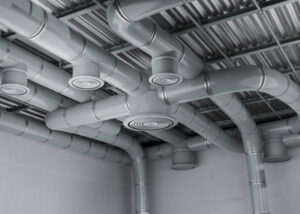Misconceptions about home ventilation can cause you to make bad choices that lower the energy efficiency and quality of the air in your house. It is essential to dispel these illusions in order to preserve a cozy and healthy living space. Here are some typical myths about ventilation that you should be aware of and debunked:
Myth 1: More Ventilation is Always Better
In actuality, too much ventilation can cause problems just as much as little ventilation. Particularly during harsh weather, over-ventilating can result in high energy expenses because it requires more effort from your heating and cooling systems to maintain appropriate temperatures. In order to ensure effective energy utilization and preserve acceptable air quality, air flow must be balanced.
Myth 2: Vents Don’t Need Regular Cleaning
The accumulation of dust, pollen, and other material in ventilation systems can have an impact on the performance of the system and the quality of the air. In order to avoid obstructions and preserve a healthy air flow, vents and ductwork must be cleaned on a regular basis. In addition to ensuring that your HVAC system operates more efficiently, this also helps to extend its lifespan.
Myth 3: Energy Recovery Ventilators (ERVs) Are Unnecessary
Energy-recovering ventilators (ERVs) are essential in tightly sealed dwellings because they maintain a steady flow of fresh air, enhance climate control, and use less energy. Preconditioning the incoming air helps your HVAC system work less hard, which can save a lot of energy and enhance the quality of the air indoors
Myth 4: Closing Vents in Unused Rooms Saves Energy
It’s possible that this widespread practice does more harm than benefit. Vents in empty rooms should not be closed because this might throw off your home’s pressure balance and airflow, increasing energy costs and stressing your HVAC system. For optimal system performance and uniform air circulation, vents should be kept open.
Myth 5: Indoor Plants Can Replace Ventilation
Although indoor plants can produce oxygen and absorb some pollutants, they cannot take the place of adequate ventilation, even though they do make a minor improvement in the quality of the air. In order to maintain proper interior air quality and efficiently manage airflow, a mechanical ventilation system is required.
Myth 6: Ceiling Fans Can Act as Ventilators
Since ceiling fans don’t switch between indoor and outdoor air, they just increase room circulation rather than ventilation. They work well to help distribute air and give a space a cooler feeling, but they cannot replace a functional ventilation system.
Conclusion
Understanding the truths behind these common myths will help you manage your home’s ventilation more effectively. Ensure your ventilation system is correctly designed and maintained to promote a healthier, more comfortable, and energy-efficient home environment.





